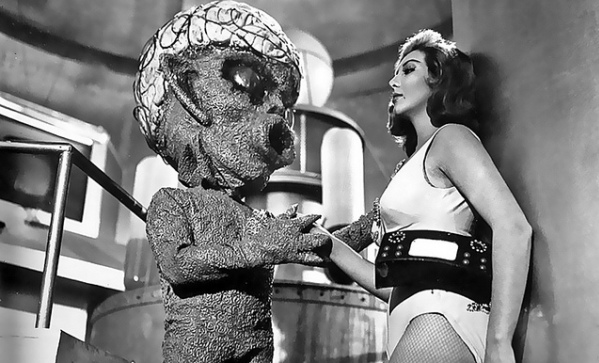For most of us, exposure to the expansive world of pseudoscience comes in the form of satirical skepticism, with global homeopathy overdose events and million-dollar offers for proof of the paranormal at one extreme, and at the other, ubiquitous, less-than-believable horoscopes. What we often fail to recognize is the inspiration for such parodies: The stark reality that these highly unscientific concepts pervade our media, and are thoroughly embraced by large populations. Perceiving that reality can be depressing.
Thus, I was pleasantly surprised at the recent announcement that Carl Sagan’s Cosmos is to return to TV in 2013. The original multiple-award-winning 1980 documentary series, Cosmos: A Personal Voyage, was written and hosted by astronomer and astrophysicist (and agnostic) Sagan, and it creatively and inclusively explored the origins of the universe, life and our planetary system.
With Sagan having passed away in 1996, what’s perhaps shocking to the average TV viewer is the name of the new series’ producer: Family Guy creator Seth MacFarlane. Still, Cosmos redux won’t be a slapstick laughfest: MacFarlane’s an outspoken atheist and space nerd, and he’s teaming up with Sagan’s widow, Ann Druyan. The show will be hosted by the charismatic astrophysicist Neil deGrasse Tyson, who gained a populist reputation when he appeared on The Colbert Report this past January, responding to Fox correspondent Bill O’Reilly’s argument for the existence of God (“Tide goes in, tide goes out, you can’t explain that”). Tyson’s answer, in short, involved a little thing called “the moon.”
With the new Cosmos, Tyson will explain further inexplicables once a week on, go figure, Fox. A science show to appear in a primetime position on a major network with powerful backing? I like the sound of that.
The Cosmos announcement came on the heels of another victory in informed education: the resolution of a two-year debate in Texas regarding middle-school science curriculum, which closed in favor of evolution. In some senses, though, I feel foolish qualifying this as a success. The fact that drawn-out debate occurred over whether intelligent design should be taught in science classrooms?At best laughable, at worst suicidal-thought-inducing.
Still, despite these examples of positive progress towards what I’ll loosely classify as logic and rationality, it doesn’t take a hard look to see popular media mired, more than ever, in the glorification — and in turn, perpetuation — of the paranormal and pseudoscientific. “Documentaries” of UFO drivel, regular appearances of “psychics” on daytime television, programs following “ghost-hunters” (who, you’d think by now would have found something, well, tangible): They’re all comfortably ensconced within the cowardly realm of “entertainment,” and they push not only misinformation but also, worse, a sense of contentedness with misunderstanding. If there’s one thing that truly irks me, it’s that kind of O’Reilly mentality — the facile If I don’t understand something, it must involve divine or paranormal intervention cop-out.
Even academia has jumped on the bandwagon. Toronto’s Ryerson University offers a class entitled Astronomy vs. Astrology, which, while clearly stating the recognized differences between the two fields, still uses petty mysticism to garner attraction. Granted, the study of space was previously interconnected with superstitious nonsense: before modern science, everything we knew was mixed up in it. Even in the 21st century, we still fight to separate the two — so, to suggest that they’re intrinsically intertwined is intentionally misleading. It panders to horoscope-happy types who “like, totally know it’s not really real” but also remark that their trustworthiness, or perhaps their gullibility, is a factor of their astrological sign.
Only time will tell if the Cosmos reboot will match ratings with Dr. Phil or the WWF. An educated guess is: not likely. Still it’s reassuring to have it back. With MacFarlane producing, what’s the worst that could happen?
——————–
Image courtesy of x-ray delta one.


